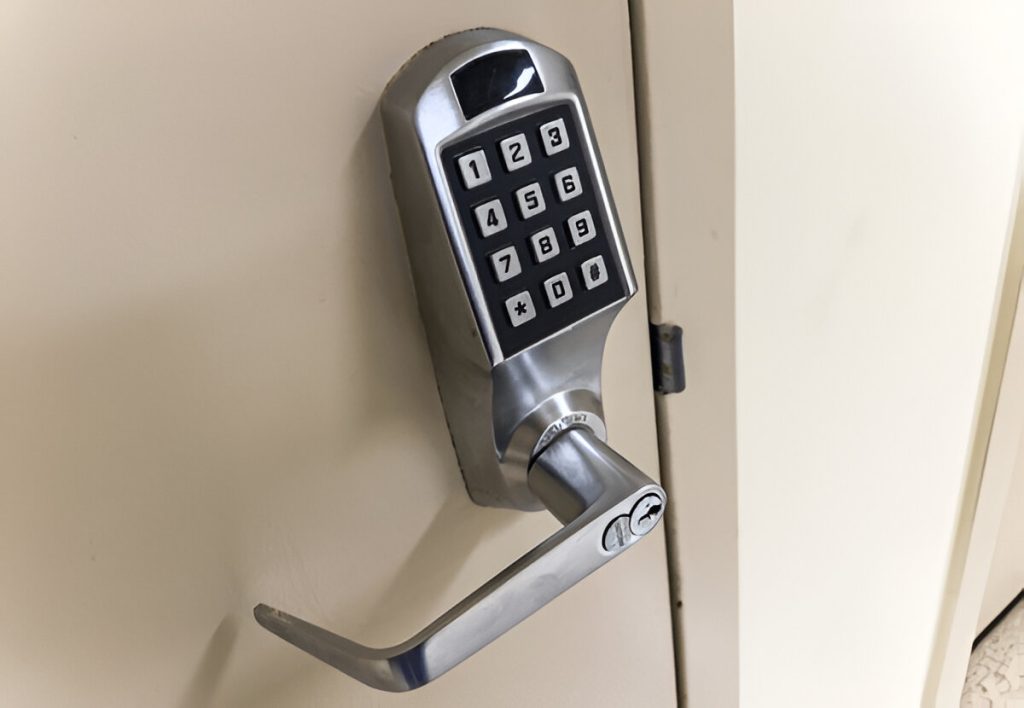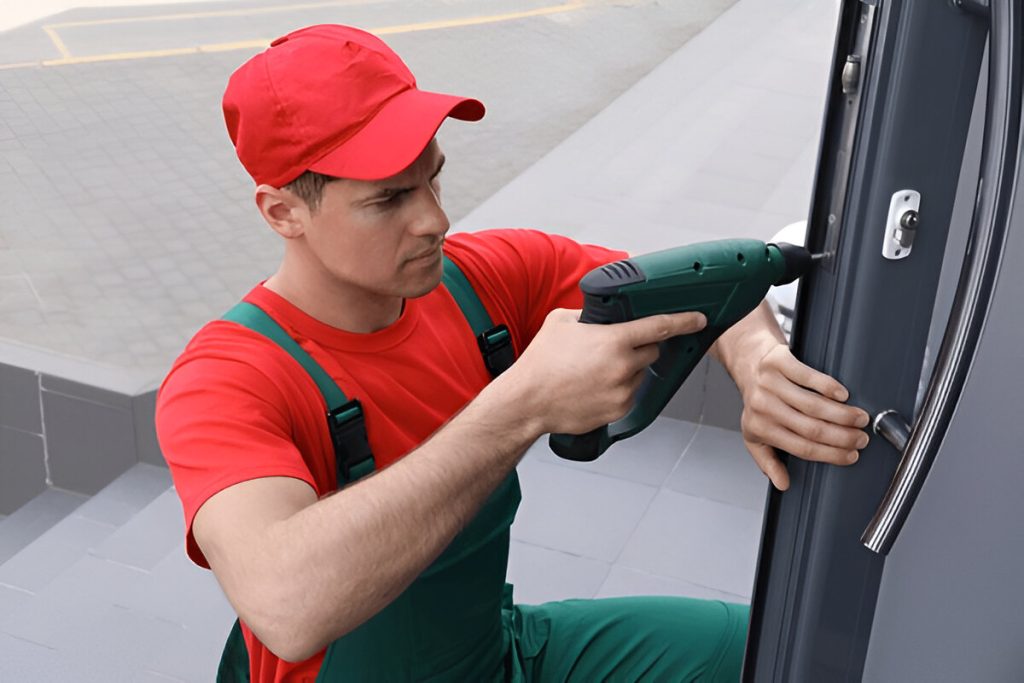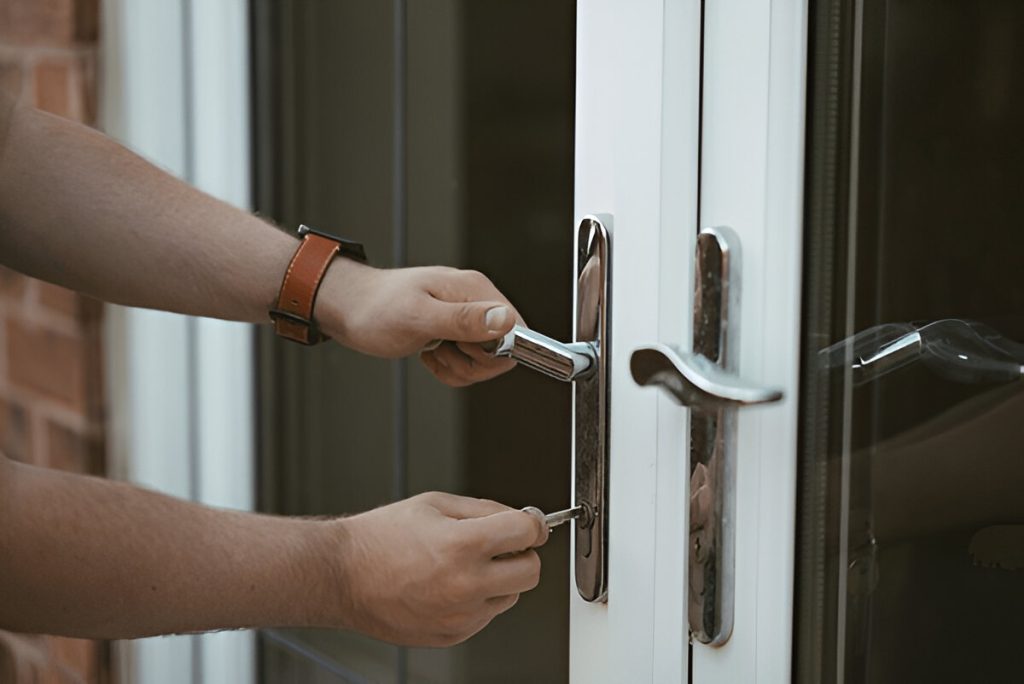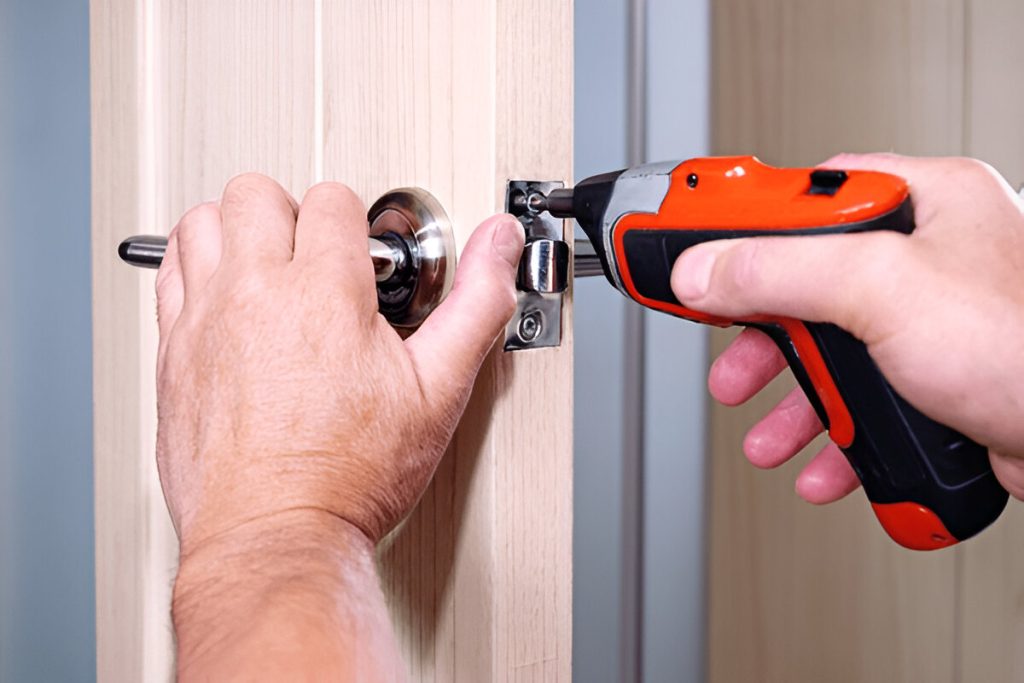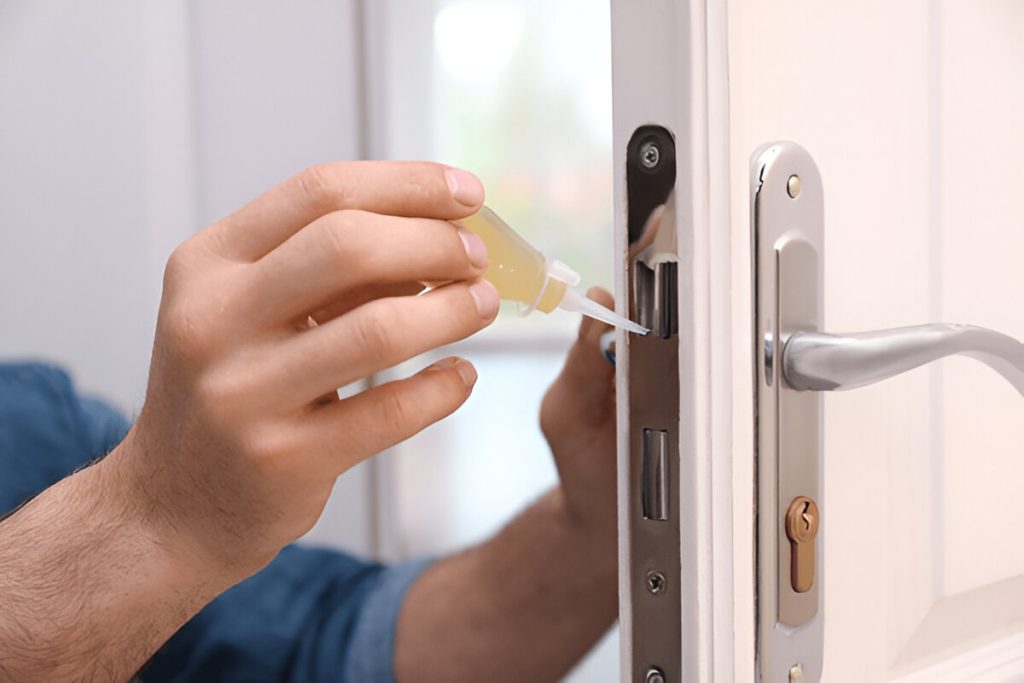Commercial Locksmith Service
IN-N-OUT Locksmith secures workplaces across Baltimore, Howard, Anne Arundel, Harford and Carroll Counties. We install, repair, and upgrade the hardware that keeps your doors safe and easy to use. This list includes several security features. They are:
- Panic bars
- Exit devices
- Door closers
- Lock cylinders
- Restricted keyways
- Access control systems, such as:
- Maglocks
- Electric strikes
- Keypads
- Card/mobile readers
Whether you have a single storefront door or need help with multiple sites, we provide a clear, itemized estimate. You can expect neat workmanship and practical documentation for your records and inspections.
